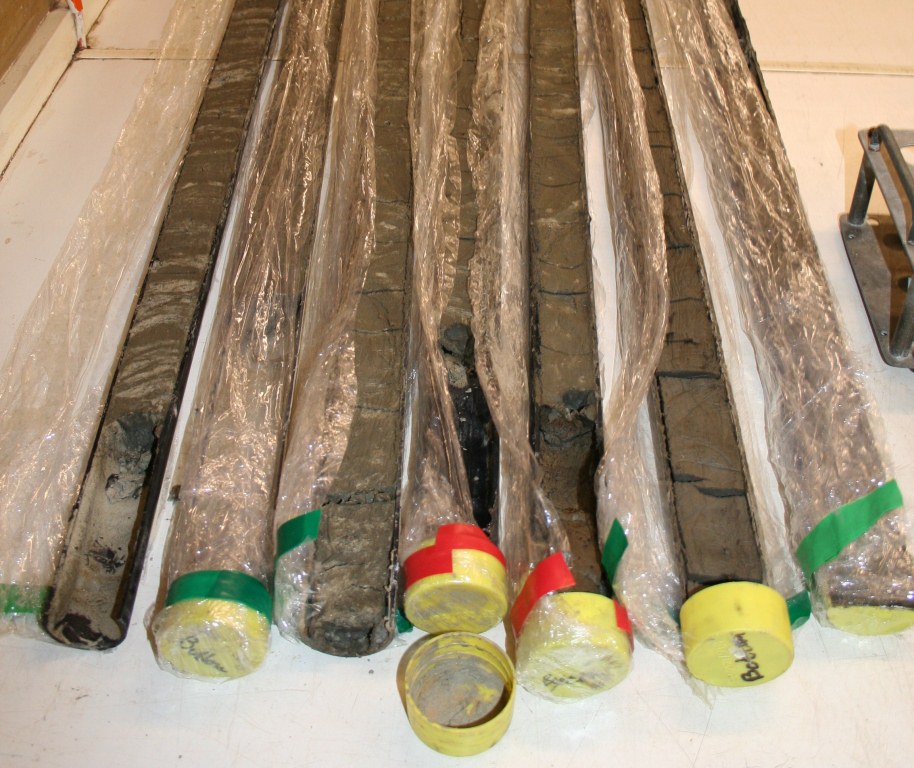

A glimpse at life as a PhD student ……

January 17, 2012
The New Year is here folks with a bang and a pop! Hopefully this will be a very prosperous and happy new year for us all and in particular, I’m hoping that the Mayans made an error regarding the end of the world taking place in 2012. With the onset of a new year, renewed resolutions have been made, gyms have been joined, diets are being followed and attempts at the learning of languages have commenced. In the world of earth sciences on the other hand, gyms are replaced with laboratories, diets with diagrams and the only language that needs to be learned is that of FORTRAN!
Upon my return to the ‘Fortress of Solitude’ (a rather lofty and slightly cold office on the 2nd floor of the Geography Building in QUB) I once again commence work on the cores collected from the Sundarbans in November 2010.
Since the project I am working on involves determining the source of sediments within the Sundarbans, examination of the mineralogical constituents from these cores has been one of my most predominant and challenging activities in recent times. I don’t think the Cambridge physicists William Lawrence Bragg and his father William Henry Bragg would ever have conceived of the fact that the breakthrough they had one hundred years ago (i.e. Bragg’s Law of X-ray diffraction) with Laue diffraction would be employed with such trepidation and excitement as to elucidate late-Quaternary sedimentary provenance of the Indian Sundarbans. X-ray diffraction (XRD for short) is a non-destructive analytical technique for determining crystalline structures of materials, and since minerals are crystals this method works a treat for investigating which ones may be present in the material being examined.
Taking some poetic licence regarding the laborious details of the XRD process, sediments are dried and ground down to a powder, placed on a sample holder, left to sit spin while a powerful light bulb shines incandescently to illuminate the mineralogy at different angles… In a manner of speaking! However, as Dr. Eldon Tyrell, the eponymous character from “Blade Runner” opines “The candle that burns twice as bright burns half as long”, and running sample after sample through the instrument, can and I say this with some regret, lose part of its lustre!
This drop in enthusiasm is readily reversed once the XRD results are processed with the aid of the XRD computer program and one can get back to the job of science and interpreting the data.
As I finish off editing some of the data and start the process of powering down my computer for the night with the dark winter sky drawing closer and each day getting ever so slightly longer with the pensive anticipation of the onset of Spring, I am reminded by the American poet Robert Frost and a particular passage from “The Road Not Taken”:
“I shall be telling this with a sigh
Somewhere ages and ages hence:
Two roads diverged in a wood, and I –
I took the one less traveled by,
And that has made all the difference.”
Till next time folks!
Rory Flood, PhD Student, Queen’s University Belfast, School of Geography, Archaeology and Palaeoecology (GAP), http://www.qub.ac.uk/schools/gap/
You might also be interested in...
Van Walt Guidelines for sampling for PFAS in Groundwater
November 13, 2024We need to make clear, that at the time of writing, there are no ISO or EN standards which deal with the sampling of groundwater for PFAS.
Read MoreSpot measurement v. continuous environmental monitoring
August 25, 2023Environmental monitoring has developed considerably over the years. From the time when a consultant went out monthly or quarterly with a dip tape to monitor the groundwater level in a borehole, wind forward...
Read MoreMeasuring Nitrates (NO3, NO3-N) in the field
June 20, 2023The interest in Nitrates is nothing new. One way or another we have been measuring them for half a century.
Read MoreVan Walt Environmental Equipment
A small selection of our environmental equipment

